Light-driven molecular jackhammers destroy cancer cells
 Scientists have developed methods to enhance near-infrared light-powered molecular machines called 'molecular jackhammers' that can perforate cell membranes on command.
Scientists have developed methods to enhance near-infrared light-powered molecular machines called 'molecular jackhammers' that can perforate cell membranes on command.

 Subscribe to our Nanotechnology Spotlight feed
Subscribe to our Nanotechnology Spotlight feed
 Scientists have developed methods to enhance near-infrared light-powered molecular machines called 'molecular jackhammers' that can perforate cell membranes on command.
Scientists have developed methods to enhance near-infrared light-powered molecular machines called 'molecular jackhammers' that can perforate cell membranes on command.
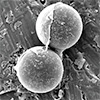 Researchers develop miniature motorized sensors employing genetically engineered viruses to selectively detect E. coli bacteria with speed and accuracy down to medically meaningful concentrations.
Researchers develop miniature motorized sensors employing genetically engineered viruses to selectively detect E. coli bacteria with speed and accuracy down to medically meaningful concentrations.
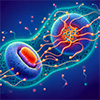 Combining pH nanosensors and super-resolution microscopy illuminates transient signaling between cellular organelles, unlocking new vistas for diagnosing and manipulating inter-organelle crosstalk.
Combining pH nanosensors and super-resolution microscopy illuminates transient signaling between cellular organelles, unlocking new vistas for diagnosing and manipulating inter-organelle crosstalk.
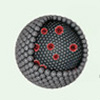 Researchers encased genetically modified microbes in protective metal-organic framework shells to create 'living seeds' that could enable the real-world use of engineered organisms for manufacturing, medicine, environmental remediation, and more.
Researchers encased genetically modified microbes in protective metal-organic framework shells to create 'living seeds' that could enable the real-world use of engineered organisms for manufacturing, medicine, environmental remediation, and more.
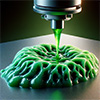 Researchers formulated an adhesive, shear-thinning bioink that maintains structural integrity when 3D printed underwater. This technology significantly expands bioprinting capabilities for surgical tissue grafts.
Researchers formulated an adhesive, shear-thinning bioink that maintains structural integrity when 3D printed underwater. This technology significantly expands bioprinting capabilities for surgical tissue grafts.
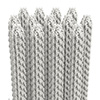 By genetically enhancing the intrinsic pyroelectric properties of viruses, researchers pave the way for biodegradable, ultra-sensitive gas sensors and bio-inspired energy harvesters.
By genetically enhancing the intrinsic pyroelectric properties of viruses, researchers pave the way for biodegradable, ultra-sensitive gas sensors and bio-inspired energy harvesters.
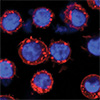 Researchers develop cell membrane-coated magnetic nanoparticles that leverage abilities to both target circulating tumor cells and evade white blood cells, enabling isolation of scarce circulating tumor cells from blood with 10x higher purity.
Researchers develop cell membrane-coated magnetic nanoparticles that leverage abilities to both target circulating tumor cells and evade white blood cells, enabling isolation of scarce circulating tumor cells from blood with 10x higher purity.
 Scientists have developed a two-headed DNA-decorated carbon nanotube biosensor that leverages synergistic effects to identify disease biomarkers like proteins and DNA with record sensitivity, demonstrating applicability in endometriosis, cancer screening, and monkeypox detection.
Scientists have developed a two-headed DNA-decorated carbon nanotube biosensor that leverages synergistic effects to identify disease biomarkers like proteins and DNA with record sensitivity, demonstrating applicability in endometriosis, cancer screening, and monkeypox detection.